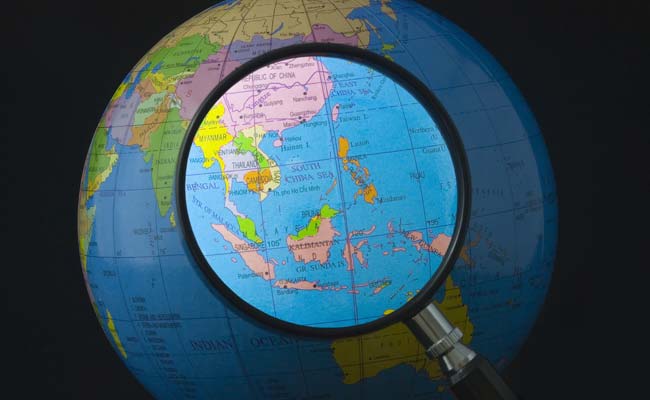
South Asia minus India yet to cash in oil price fall dividend - World Bank
The Dollar Business Bureau  A World Bank report notes that India has already taken encouraging steps to decouple international oil prices from fiscal deficits and to introduce carbon taxation to address the negative externalities from the use of fossil fuels. The challenge will be to stay the course in the event of oil price hikes – something that may well happen in the medium term. However, “The biggest oil price dividend to be cashed in by South Asia is one yet to be earned, but it is not one that will automatically transit through government or consumer accounts” said World Bank South Asia Chief Economist Martin Rama. “Cheap oil gives the opportunity to rationalize energy prices, reducing the fiscal burden from subsidies and contributing to environmental sustainability”, he added. According to the twice-a-year South Asia Economic Focus report, GDP growth in India is expected to accelerate to 7.5% in Fiscal Year 2015-16. It could reach 8% in FY2017-18, on the back of significant acceleration of investment growth to 12% during FY2016-18. The country is attempting to shift from consumption-to-investment-led growth, at a time when China is undergoing the opposite transition. Driven by a strong expansion in India, coupled with favourable oil prices, economic growth in South Asia is expected to accelerate. The region is among the greatest global beneficiaries from cheap oil, as all countries in it are net oil importers. In the last quarter of 2014 South Asia was already the fastest-growing region in the world, the report said. Regional growth is projected to steadily increase from 7% in 2015 to 7.6% by 2017 through maintaining strong consumption and increasing investment. Given India’s weight in regional Gross Domestic Product (GDP), the projections reflect to a large extent India’s expected growth acceleration, driven by business-oriented reforms and improved investor sentiment. The decline in oil prices has been reflected in the domestic prices of oil products to different extents across the region. The pass-through exceeded 50 percent for most oil products in Pakistan, but was nil in Bangladesh. Together with favourable food prices, cheaper oil has contributed to a rapid deceleration of inflation. South Asia went from having the highest inflation rate among developing regions to having the lowest in barely one year. In March 2013, the Consumer Price Index (CPI) of the region had increased by 7.3% year-on-year, compared to 1.4% in March 2015. External vulnerabilities have receded, the report said. Current account balances are strong in most countries. Capital inflows to India have increased from 1.9 to 3.4% of GDP, although more volatile portfolio investments account now for a greater share of the total. International reserve buffers have been built across the region, including in Pakistan which is now out of the danger zone. However, the export performance of the region has disappointed. After a promising rebound last year, exports are now slowing down. By end 2014, export growth was close to zero across the region. “Savings from reduced subsidy bills could be used to address the crying needs of the region in terms of infrastructure, basic services and targeted support for the poor”, said World Bank Vice President for South Asia, Annette Dixon. The report shows that households in the region stand to gain from lower oil prices, both directly through lower energy spending and indirectly through faster growth. But except for kerosene, richer households spend more in oil products, and stand to gain more.
A World Bank report notes that India has already taken encouraging steps to decouple international oil prices from fiscal deficits and to introduce carbon taxation to address the negative externalities from the use of fossil fuels. The challenge will be to stay the course in the event of oil price hikes – something that may well happen in the medium term. However, “The biggest oil price dividend to be cashed in by South Asia is one yet to be earned, but it is not one that will automatically transit through government or consumer accounts” said World Bank South Asia Chief Economist Martin Rama. “Cheap oil gives the opportunity to rationalize energy prices, reducing the fiscal burden from subsidies and contributing to environmental sustainability”, he added. According to the twice-a-year South Asia Economic Focus report, GDP growth in India is expected to accelerate to 7.5% in Fiscal Year 2015-16. It could reach 8% in FY2017-18, on the back of significant acceleration of investment growth to 12% during FY2016-18. The country is attempting to shift from consumption-to-investment-led growth, at a time when China is undergoing the opposite transition. Driven by a strong expansion in India, coupled with favourable oil prices, economic growth in South Asia is expected to accelerate. The region is among the greatest global beneficiaries from cheap oil, as all countries in it are net oil importers. In the last quarter of 2014 South Asia was already the fastest-growing region in the world, the report said. Regional growth is projected to steadily increase from 7% in 2015 to 7.6% by 2017 through maintaining strong consumption and increasing investment. Given India’s weight in regional Gross Domestic Product (GDP), the projections reflect to a large extent India’s expected growth acceleration, driven by business-oriented reforms and improved investor sentiment. The decline in oil prices has been reflected in the domestic prices of oil products to different extents across the region. The pass-through exceeded 50 percent for most oil products in Pakistan, but was nil in Bangladesh. Together with favourable food prices, cheaper oil has contributed to a rapid deceleration of inflation. South Asia went from having the highest inflation rate among developing regions to having the lowest in barely one year. In March 2013, the Consumer Price Index (CPI) of the region had increased by 7.3% year-on-year, compared to 1.4% in March 2015. External vulnerabilities have receded, the report said. Current account balances are strong in most countries. Capital inflows to India have increased from 1.9 to 3.4% of GDP, although more volatile portfolio investments account now for a greater share of the total. International reserve buffers have been built across the region, including in Pakistan which is now out of the danger zone. However, the export performance of the region has disappointed. After a promising rebound last year, exports are now slowing down. By end 2014, export growth was close to zero across the region. “Savings from reduced subsidy bills could be used to address the crying needs of the region in terms of infrastructure, basic services and targeted support for the poor”, said World Bank Vice President for South Asia, Annette Dixon. The report shows that households in the region stand to gain from lower oil prices, both directly through lower energy spending and indirectly through faster growth. But except for kerosene, richer households spend more in oil products, and stand to gain more.
This article was published on April 14, 2015.






 to success.
to success.